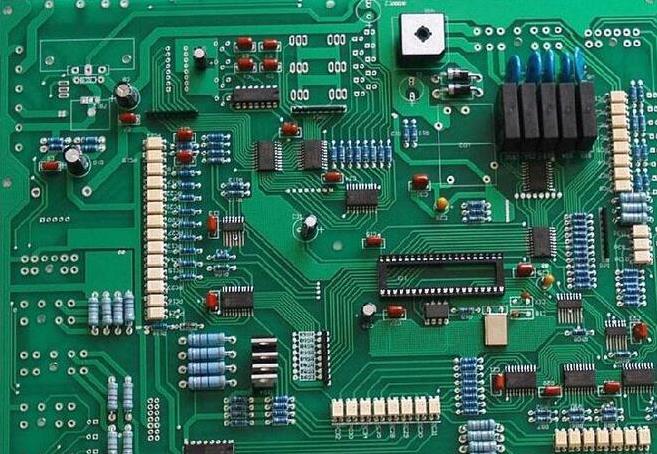In PCB industry production, there are two laser technologies that can be used for laser drilling. The wavelength of CO2 laser is in the far-infrared band, and the wavelength of ultraviolet laser is in the ultraviolet band. CO2 lasers are widely used in the production of industrial micro-vias in printed circuit boards, and the diameter of the micro-vias is required to be greater than 100μm (Raman, 2001). For the production of these large-aperture holes, the CO2 laser has high productivity, because the punching time required for the CO2 laser to make the large holes is very short. Ultraviolet laser technology is widely used in the production of micropores with a diameter of less than 100μm. With the use of miniature circuit diagrams, the aperture can even be less than 50μm. Ultraviolet laser technology produces very high yields when making holes less than 80μm in diameter. Therefore, in order to meet the increasing demand for micro-hole productivity, many manufacturers have begun to introduce dual-head laser drilling systems. The following are the three main types of dual-head laser drilling systems used in the market today:

1) Double-head ultraviolet drilling system;
2) Double-head CO2 laser drilling system;
3) Stick laser drilling system (CO2 and UV).
All these types of drilling systems have their own advantages and disadvantages. Laser drilling systems can be simply divided into two types, a dual-bit single-wavelength system and a dual-bit dual-wavelength system. Regardless of the type, there are two main parts that affect the ability to drill:
1) Laser energy/pulse energy;
2) Beam positioning system.
The energy of the laser pulse and the transmission efficiency of the beam determine the drilling time. The drilling time refers to the time for the laser drilling machine to drill a micro through hole, and the beam positioning system determines the speed of movement between the two holes. These factors together determine the speed of the laser drilling machine to make the micro-vias required by the given requirements. The dual-head UV laser system is most suitable for drilling holes smaller than 90μm in integrated circuits, and its aspect ratio is also very high.
The dual-head CO2 laser system uses a Q-switched RF excitation CO2 laser. The main advantages of this system are high repeatability (up to 100kHz), short drilling time, and wide operating surface. It only takes a few shots to drill a blind hole, but its drilling quality will be relatively low.
The most commonly used dual-head laser drilling system is a hybrid laser drilling system, which consists of an ultraviolet laser head and a CO2 laser head. This comprehensively used hybrid laser drilling method can facilitate the simultaneous drilling of copper and dielectric. That is, the copper is drilled with ultraviolet rays to generate the required hole size and shape, and then the CO 2 laser is used to drill the uncovered dielectric. The drilling process is done by drilling a 2in X 2in block, this block is called a domain.
CO2 laser effectively removes dielectrics, even non-uniform glass reinforced dielectrics. However, a single CO2 laser cannot make small holes (less than 75μm) and remove copper. There are a few exceptions, that is, it can remove pre-treated thin copper foils below 5μm (lustino, 2002). Ultraviolet laser can make very small holes, and can remove all ordinary copper streets (3-36μm, 1oz, and even electroplated copper foil). Ultraviolet lasers can also remove dielectric materials alone, but at a slower speed. Moreover, for non-uniform materials, such as reinforced glass FR-4, the effect is usually not good. This is because the glass can be removed only when the energy density is increased to a certain level, which will also damage the inner pads. Since the stick laser system includes ultraviolet laser and CO 2 laser, it can achieve the best in both fields. The ultraviolet laser can complete all copper foils and small holes, and the CO 2 laser can quickly drill the dielectric. hole.
Now, most double-head laser drilling systems have a fixed distance between the two drill bits, and they also have a step-and-repeat beam positioning technology. The advantage of the step-by-step and repeat laser remote controller itself is that the adjustment range of the domain is large (up to (50 X 50) μm). The disadvantage is that the laser remote regulator must move step by step in a fixed domain, and the distance between the two drill bits is fixed. The distance between the two drill bits of a typical double-head laser remote controller is fixed (approximately 150μm). For different panel sizes, fixed-distance drills cannot be operated in the best configuration like programmable pitch drills.
Nowadays, the dual-head laser drilling system has a variety of different specifications of performance, which can be applied to both small PCB manufacturers and mass-produced printed circuit board manufacturers.
Because ceramic alumina has a high dielectric constant, it is used to manufacture printed circuit boards. However, due to its fragility, the drilling process required for wiring and assembly is difficult to complete with standard tools, because the mechanical pressure must be reduced to a minimum at this time, which is a good thing for laser drilling. Rangel et al. (1997) proved that for alumina substrates and alumina substrates coated with gold and anchors, QNd: YAG lasers can be used for drilling. The use of short-pulse, low-energy, and high-peak-power lasers helps to avoid damage to the sample by mechanical pressure, and can produce high-quality through holes with a diameter of less than 100μm.